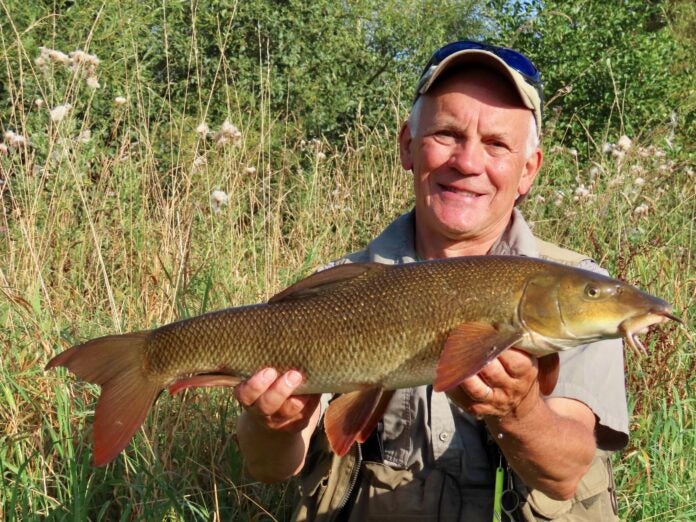My history of barbel fishing on the Wye goes back to 1986, and my history of barbel catching to around 1989. Three years was spent in the wilderness, along with types like Pete Smith and exalted types like Chris Yates. It all came right at the turn of the Nineties, and I realise now that I personally was at my most innovative and best from perhaps 1991 to 1996, give or take a season. I was really on it then, quite intoxicated with big barbel (they were larger in those days) in a most stunning environment.
I don’t know when laziness set in, but the fact that it did was brought home to me forcibly yesterday when out on the selfsame river with Kate and Ian (aka Pingers). The weather was blistering, the river lower than low summer level, and we were quite resigned for nothing at all. Indeed, all I was doing was going through the motions, doing all the usual stuff with no conviction and, importantly, no thought. I was ensconced in ‘Banker swim’ (if only!) with Kate, and after a biteless hour realised we were wasting our time. I stood up, stretched, looked around, and that is when I realised what a waster I had become.
In mid-river, twenty yards further out than we were fishing, plumes of silt were drifting downriver. These were thick trails, emanating from at least three distinct areas. The more I looked, the more I understood I was watching a huge shoal of fish hard at their feeding. My mind spun back thirty years, and all the memories romped back.
Then, when I was younger and evidently more hard working, I ALWAYS walked the slow, deep, wide stretches of the Wye with Polaroids and binoculars. I NEVER plonked down and fished blind, because I knew the entire barbel population of a mile of river could often be found concentrated in one or two groups, sometimes numbering scores and hundreds of fish. Outside of those very tight groupings, there might be NO OTHER fish at all. In fact, fail to get a bait right in amongst the silt clouds, preferably near the source of them, and you would not get a whiff of a bite. Simple as that.
It was a fact I proved to myself a hundred times, or probably far more. In fact, if I could not locate feeding barbel on one of the relatively featureless stretches, then I wouldn’t even fish there. (Of course, the Wye then was comparatively underfished, and you could wander the banks often alone, but even now, this approach is well possible in many areas.) This “fact” explains why in matches one angler might weigh in big-time, but the pegs either side catch nothing.
I need to stress that these huge groupings of barbel did not have a permanent home, but rather wandered the river, like cows grazing in a field. Where I caught one day might be barren of fish for weeks thereafter. It was imperative to locate the fish and get a bait into that silt. What were (are) they feeding on, those rooting barbel? I guess it has to be a natural food source… even possibly bloodworm beds.
What is sure is that two large lobworms, hooked through the head, were always the best bait by far. The key was to cast the worms beyond the silt clouds and then draw them slowly back into them, where you let them sink. Bites tended to be slow but positive draws on the line that were all but impossible to miss. And so it was with Pingers and a miracle fish on a broiling day, in horrendous conditions, when we “knew” fish just were not feeding anywhere. WRONG! “Seek and you will find” is the motto of the Nineties that I have just relearned, albeit late in the season.
In a rut. Going through the motions. Taking it all for granted. Complacent, smug, thinking I know it all. Sitting back. These are angling’s deadly sins, and from now on, I’ll strive to be as proactive now as I was in my prime. Watch me go!!!











